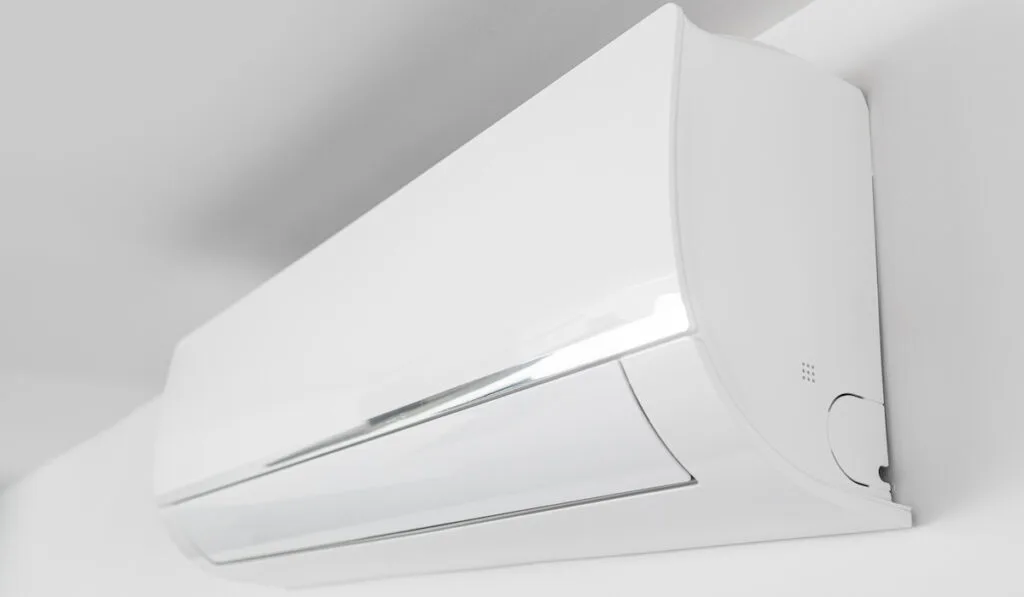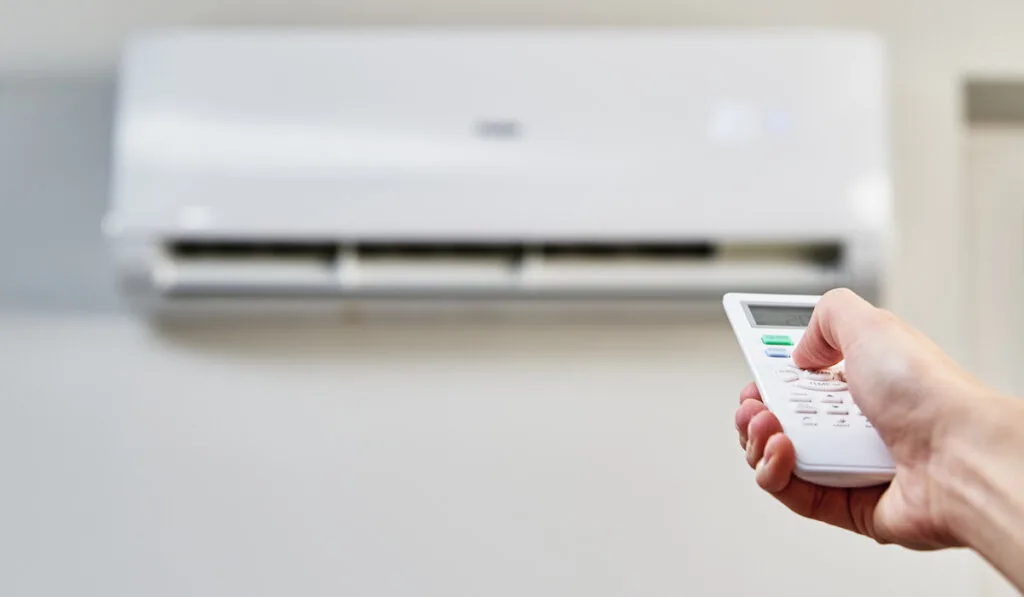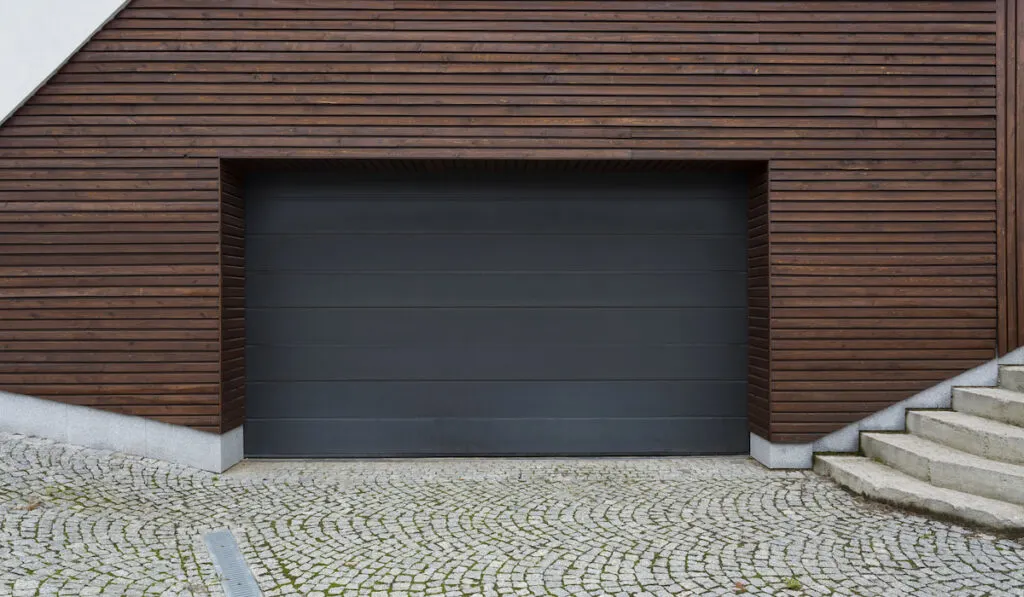*This post may have affiliate links, which means I may receive commissions if you choose to purchase through links I provide (at no extra cost to you). As an Amazon Associate, I earn from qualifying purchases. Please read my disclaimer for additional details.
You have projects that you want to work on, but it’s blazing hot outside. That means it’s like a furnace in your garage too. This is especially true if you live in very hot areas like Arizona, Nevada or even Texas. You don’t want to move to a cooler climate, so you’re determined to find a solution.

How do you cool a garage in a very hot climate? Because they aren’t considered living areas, garages and garage doors are typically either poorly insulated or not insulated at all. To provide a better barrier between the elements and your dwelling, insulate your garage walls, ceiling, and door. Also, add some weather stripping to all doors and windows to prevent air from seeping in.
Insulation isn’t the only solution available to you. In this article, we will explore some less expensive quick fixes as well as some other permanent home improvement solutions you can look into.
Table of Contents
Cooling a Garage in a Hot Climate – Starting with the Obvious
It’s already something you’ve considered – or at least mulled around in your mind, so let’s get it out of the way.
Air Conditioning
Adding an air conditioning solution to your garage is probably what everyone (including that pesky voice in your head) has already suggested. And it does seem to make sense, from a hypothetical perspective, but from a financial perspective, it can be quite inhibitive. That said, you do have some options here:

Have ductwork run and add forced air to your garage.
You have to be careful about this one, though, because often building code prohibits garages from having a cold air return installed. That makes sense because you don’t want any dangerous gas, oil, or chemical fumes getting into your house, but it also means that you don’t have an automatic pressure equalizer built-in.
To combat that, you can have an air vent installed in your ceiling (which is a good idea anyway, but more about that later.)
Add a window unit or have a contractor install a wall-unit air conditioner.
This will definitely help and would be less expensive than running ducting, but small window/wall units are only effective up to about a 20-degree variance between the outside temperature and the set temperature.
If it is 105-degrees Fahrenheit in Las Vegas and you are hoping to cool your garage to 75-degrees Fahrenheit, it’s not likely your unit will be able to meet your expectations. If you live in a humid area such as Houston, you definitely won’t be able to keep that much variance because of the extra water weight of the air.
If you live in a humid environment, consider installing a dehumidifier.
You’ve probably heard someone say of Phoenix, “Oh, but it’s a dry heat…” Trust me: hot is hot. That said, it is true that heavy humid air holds the heat more than dry air does. Once again, these units can only keep up to a certain extent.
To help your unit perform at its peak, clean it every month and make sure you are emptying the overflow bin on a regular basis. DO NOT drink or use the output water any way other than perhaps watering your garden.
Ventilation and Fans
Have you ever stood outside on a sweltering day and been ever-so-grateful for even the slightest of a breeze? Even when hot air moves, it seems to feel a little cooler.
By making sure that your garage is ventilated, you are taking care of part of the problem right there. Since hot (or hotter) air rises, it makes sense to have ventilation in your garage roof. This is automatic for many attic areas but isn’t always considered when it comes to the garage.

To the point of moving air seems to be cooler, you could consider installing ceiling fans on opposite sides of your garage – one set to blow air into the garage and the other to expel air from the garage. This will provide constant air circulation.
If that feels like too much to take on, consider putting a portable fan or two in your garage. Slightly crack the garage door up to four inches to keep the air moving.
It may seem obvious, but you wouldn’t believe how many people have missed this point: if you decide to install a ceiling fan where your garage light hangs, first make sure that it won’t interfere with your garage door when it’s fully open – or opening.
Pro Tip: Regardless of fan type, the larger your fan blades, the better the air will circulate.
Cooling a Hot Garage – Less Obvious Solutions
Sure, thinking about adding air conditioning and fans is a bit of a no-brainer, so here are a few more tips that could help you cool things down:
Paint Your Garage Door and Siding

Of course, you have planned your house to coordinate and to blend together into one cohesive unit, but if you have a dark brown house, did you know that you are inviting heat to come into your garage?
If you have the flexibility, and wherewithal, consider painting your garage a light color like white, light gray, a subtle yellow, or cream. Dark colors attract, or absorb, heat, light colors reflect it.
Don’t believe it? A study published by Berkeley Lab in 2017 showed the energy savings difference between a house with a white roof and a black roof was 20.5%.
Now while we’re not necessarily advocating that you re-roof your house, although that is a viable energy saving (and heat decreasing) option, the same logic follows for paint colors as it does for roofs.
Caulk Cracks
If you want to prevent hot air from oozing into your garage when you’re not trying to intentionally ventilate it and move air around, take some time to find those tiny cracks in your siding and seal them with some weatherproofing caulk. This is an extremely inexpensive solution that can make a big difference for you.
Install Insulated Curtains Along Your Walls
Does your garage have windows? Consider buying some insulated curtains. They will help block the heat from radiating through your windows.
Another thought along these lines and a less expensive option to getting your entire garage insulated could be to line all of your garage walls with insulated curtains. While they won’t be as effective as actual insulation, they can definitely help.
Consider Switching Up Your Plans
Sure, most people know that the temperatures are typically cooler in the morning before 10 a.m. and the late evening after the sun goes down, but do you think about that when you’re planning your projects?
We live in a 9-to-5 environment, and that tends to trickle over to our recreational pursuits too. If you plan on working on your garage projects during cooler times of the day, you have a better chance of experiencing less heat discomfort.
It won’t completely solve the issue, because it’s summer and it’s HOT! But it will help some.
Leave Your Car Outside After You Get Home
This is a hard one because you don’t want the sun damaging your vehicle’s paint. By the same token, if you’ve been out driving and your engine is radiating heat, why would you add to the heat problem you already have?
When you’ve been out and about, park your car in the driveway until you’re finished working on your project for the day. When you’re ready to call it quits, pull your car into the garage and put it to bed for the night.
Cool Down!
Summer can get really hot, and hot is hot. That’s just a fact. Fortunately, there are several options you have to help you find solutions for cooling your garage down.
